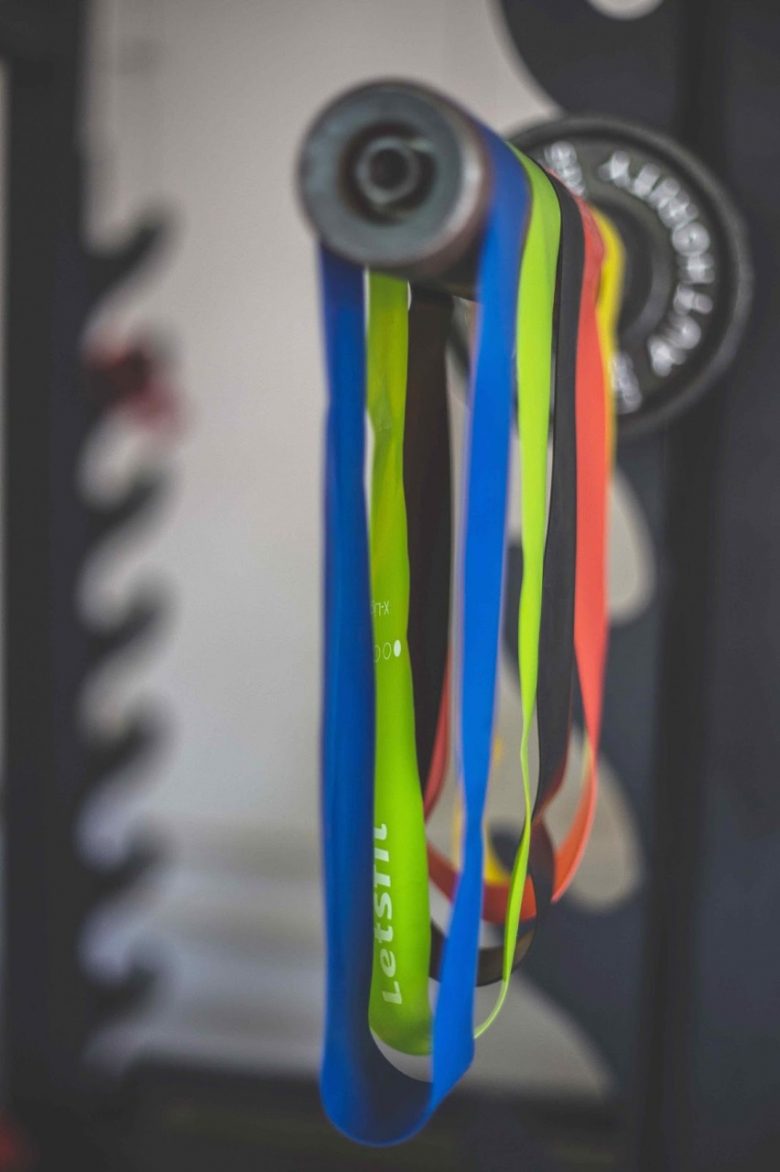Resistance bands are stretchable workout bands and it is commonly used in muscle-building and physical therapy.
You may have heard of different resistance bands used for different purposes.
But what purposes are they for? And what should you look for when buying a resistance band?
This article dives into how resistance bands work with explanations on the types of resistance bands that can best suit your fitness goals.
RESISTANCE BANDS – HOW DO THEY WORK?
- Similar to free weights, resistance bands impart an external resistance that your muscles must work against.
- As you push/pull the resistance band, your muscles contract and expand to fight that resistance and counter that tension. This, in turn, strengthens your muscles with regular use.
WHEN ARE RESISTANCE BANDS USEFUL?
- Resistance bands can help beginners with most exercises like assisted pull-ups, bicep curls, chest press, squats, box jumps, and more, all without free weights.
- These bands can be used to train every major muscle group and it is often used by individuals with experience to add a level of difficulty to their existing fitness routine.
- Resistance bands are also effective in physical therapy where people suffering from injuries or damaged muscles can recover their strength over time.
TYPES OF RESISTANCE BANDS
Resistance bands can be flat-surfaced or tube-like structures and some have handles while others have loop/ring forms.
- These resistance bands come in different colors to indicate different levels of resistance.
- Manufacturers usually set a custom color scheme for bands but the most common color schemes, from lightest resistance to heaviest, are yellow, red, green, blue, and black.
Here is an explanation about the types of resistance bands and how they are useful:
- Therapy Bands are used in physical therapy. These flat-structured bands are 4 feet long and are very gentle on the body.
- Loop Bands or Power Resistance Bands are flat, circling bands used to train the lower body, from the glutes to the legs. They also add extra power to yoga and other muscle-building exercises.
- Figure 8 Bands can mimic push and pull exercises in lateral motions and their short structures work best to strengthen the upper body, specifically the arms.
- Tube Resistance Bands are great for chest presses, shoulder presses, and any exercise that demands pull and press motions. It can hit all muscle groups with a good range of motion.
- Ring resistance bands target both the arms and legs while lateral resistance bands target the lower body. There are also pull-up bands that assist you with pull-ups.
ADVANTAGES OF RESISTANCE BANDS
- Resistance bands are moderately priced, lightweight, and portable with a lesser risk of injury when compared to free weights.
- These bands are versatile and easy to use. They can be used to train all muscle groups and the presence of resistance levels ensure that it can be used by anyone, from a beginner to a professional.
Do you own resistance bands? How do you use them to progress with your fitness goals?





